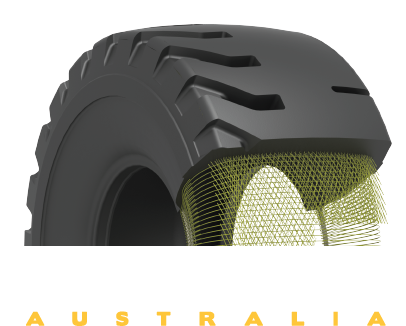Tyres & Industry
Saving Money, Improving Safety, Enhancing Productivity
Adam Gosling - Friday, August 24, 2018
In transport and mining productivity is paramount. The top three cost centres for such operations are fuel, labour and tyres.
How do we control these costs, how do we improve safety is a question often asked?
Engine control and management (ECU) systems have been employed for years with temperatures and pressures metered, observed and recorded to produce data used to enhance productivity and reduce costs. All sorts of data are measured and tracked, even speed limitations are employed within the ECU.
Driver management, rosters, comfortable cabs including air seats and safety systems including fatigue monitoring, education in techniques and skill enhancements all contribute to a happy and healthy operator. We train them so they are aware of the risks and they know how to mitigate them.
Tyres; we look and don’t see. Only when there is something wrong does a driver feel an issue, by then it could be too late, it usually is.
ECU’s record all sorts of data from an engine but the poor tyre gets kicked and ignored. With modern electronics tyre monitoring systems have become standard in passenger cars sold in the US, EU, most of Asia and most of the Eastern Bloc yet in Australia they are still ignored.
Australian regulators (and legislators) continue their ostrich-like stance in face of overwhelming evidence preferring to introduce complicated and expensive systems such as ABS, ESC and AEB but ignoring the humble tyre. What supports the vehicle?
The Performance-Based Standards Rules states (page 84):
“All the forces needed to both support and guide a vehicle ultimately arise in the area of contact between the tyre and the roadway. These forces are generated at the road surface in response to the deformation of the tyre structure.”
The deformation of a tyre is governed by the inflation pressure. In the Australian Design Rules (ADR) 42 light vehicles are required to have a tyre placard showing the optional tyre sizes and the minimum inflation pressures, yet for vehicles, over 4.5t there is no such requirement. Even an Executive Director of the NHVR has openly admitted that he doesn’t know why legislation treats tyres the way it does.
How Much Longer Are “Our Leaders” Going To Ignore Tyres?
The humble tyre provides society with a huge service, everything that is consumed is either produced using tyres and/or delivered using tyres.
A truck can operate without brakes, admittedly it won’t stop but it can operate without brakes. A suspension is not really necessary for a vehicle to operate. Steering is a system that directs the tyres, so conceivably the vehicle could operate without steering. A modern road vehicle cannot operate without tyres. The tyres connect the steering to the pavement, the brakes to the pavement, the suspension to the pavement, without tyres the vehicle cannot operate.
Yet, the media and regulators do large-scale beat-ups about faulty brakes and steering all the time ignoring the humble tyre. Ask any vehicle designer whether the vehicle will operate as designed if the tyres are not inflated appropriately for the load and speed experienced. They answer and most will testify “No!” The vehicle will not perform as expected. Ask any professional driver if the vehicle will react as reasonably expected if the tyres are not to working pressure, the same answer will be heard.
So we have a situation wherein a chain of responsibility the weakest link is the tyre inflation pressure and that link is continuously ignored. Why? Why are fleet managers ignoring the least controlled item on their fleets? Why are the regulators hiding from the evidence of other jurisdictions that show that tyre pressure monitoring systems are a large safety improvement for road going vehicles?
Australia exclaims with pride about being a leader in automotive excellence, especially in heavy vehicles, yet continues to be decades behind the global automotive industry when tyres are considered.
Don’t believe me, search on this topic
Worldwide Regulation TPMS Tyre Pressure Monitoring System
